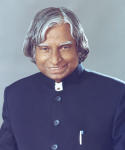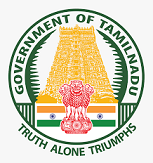POPULAR SCIENTISTS OF TAMILNADU
Srinivasa Ayengar Ramanujan (Birth 22-12-1887, Tamilnadu, India; Death 26-04-1920, Chennai, Tamilnadu, India).

Indian mathematician whose contributions to the theory of numbers include pioneering discoveries of the properties of the partition function. He worked out the Riemann series, the elliptic integrals, hypergeometric series, the functional equations of zeta function and his own theory of divergent series. Born in the town of Erode in Tamilnadu Ramanujan never had any formal education. He worked as a clerk in Madras Port Trust. As his genius gained recognition, he began correspondence with Godfrey Hardy, a British mathematician, that led to a special scholarship from the University of Madras and grant from Trinity College, Cambridge, where he conducted most of his research. He was elected FRS in 1918.
Sir Chandrasekhara Venkata Raman (Birth 7.11.1888, Tiruchirappalli, Tamilnadu, India; Death 21.11.1970, Bangalore, Karnataka, India).

Indian physicist, who was awarded the 1930 Nobel Prize in Physics for his work on the SCATTERING of light and for the discovery of the effect named after him. Raman was a professor of Physics at the University of Calcutta where he did most of his research work. He was knighted in 1929, and in 1933 he moved to the Indian Institute of Science, Bangalore as Head of the Department f Physics. In 1947, he became Director of the RAMAN RESEARCH INSTITUTE. In his later years, he made significant contributions to the field of vision, hearing and the physics of Indian musical instruments. The day on which Sir C.V.Raman discovered the RAMAN EFFECT, that is 28th February, is observed as National Science Day in India. He was elected FRS in 1924.
Subrahmanyan Chandrasekhar (Birth 19.10.1910, Madras, India; Death 1995).

Indian-born American theoretical physicist who shared the 1983 Nobel Prize in Physics with William Alfred FOWLER for theoretical studies of the physical processes relevant to the structure and evolution of the stars. He is best known for what was later known as Chandrasekhar Limit. His postulate imposes a restriction on the size of a highly dense variety of star known as WHITE DWARE. If this type of star has mass in excess of the limit which is 1.44 times the mass of the sun it becomes unstable and explodes to become a very bright star, called SUPERNOVA. He has also worked on black holes.
Avul Apkir jainulabdeen Abdul Kalam (Birth 15.10.1931, Rameshwaram in Tamilnadu, India ; Death - 27 July 2015).

Former President of India, Dr.A.P.J.Abdul Kalam has worked as Scientific Adviser to the Defence Minister and Secretary, Department of Defence Research and Development. Specialized in Aero Engineering at the Madras Institute of Technology. His work on the SLV-III, India's first satellite launch vehicle, and the Guided Missile programme has made him India's most honoured scientist and provided the foundation for the design and development of high-technology aerospace projects. Also a participant in the nuclear programme. Dr.Kalam is a firm believer in the use of technology as a tool for national development and ;he is enlisting partners in the endeavour. He is the recipient of numerous awards including the National Defence Award, the Dr.Biren Roy Space Award, and the Om Prakash Bhasin Award among others. He is also the recipient of the country's three highest civilian honours: the padma Bhushan in 1981, the Padma Vibhushan in 1990, and the Bharat Ratna in 1997.

